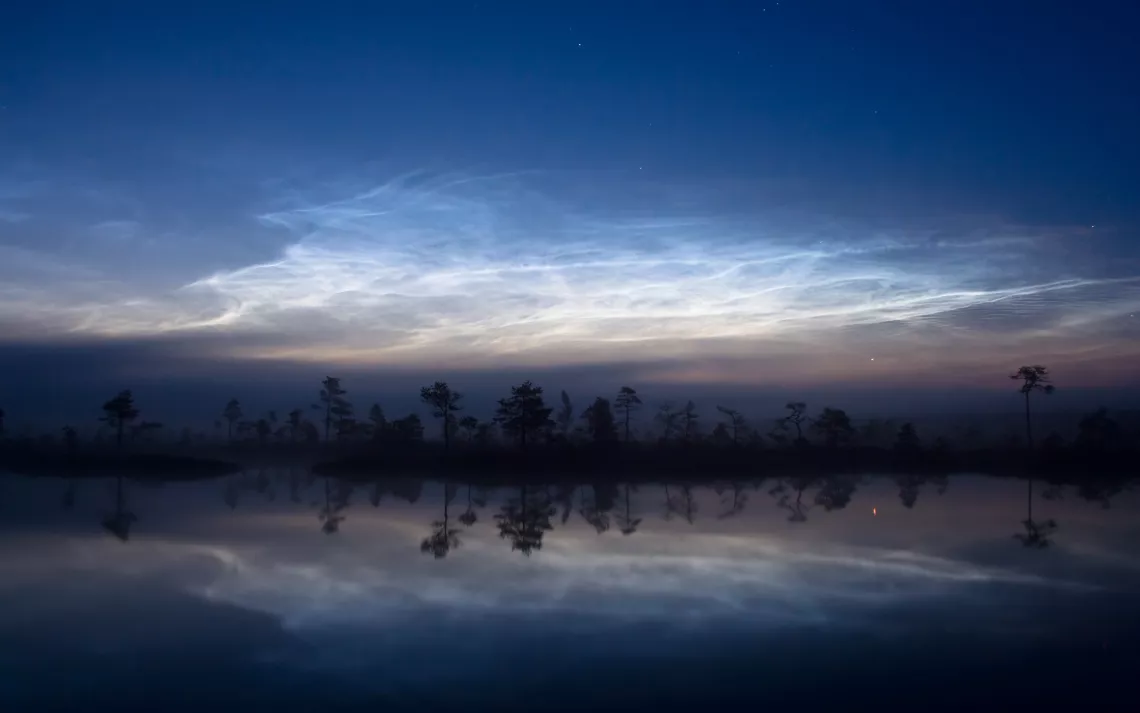Cloudy with a Chance of Global Warming

A rare cloud, possibly associated with global warming, has been spotted over Europe this summer. Scotland, Ireland, and even London have witnessed noctilucent clouds, also called polar mesospheric clouds or night-shining clouds.
Noctilucent clouds are found in the mesosphere, higher than all other clouds. Most of our weather is confined to the troposphere, at around 10 kilometers up, but mesospheric clouds can be located as high as 83 kilometers above Earth.
Noctilucent clouds are rare because the mesosphere is extremely cold and dry, making it difficult for ice crystals to form. Water vapor and dust particles must be present to stick together in order to create clouds.
The first sighting of noctilucent clouds was reported in 1885. In 1883, the volcano Krakatoa exploded in a tremendous eruption, spewing ash particles all the way into the mesosphere. Another source of the dust is outer space, as micrometeoroids rain down on our atmosphere. Summer is generally considered noctilucent cloud season, because an upwelling of water vapor can enter the mesosphere and help produce the clouds.
Global warming may play a part in the appearance of these clouds. In order for them to form in such a dry environment, extreme cold is required. Greenhouse gases that are warming the air near Earth’s surface actually lower the temperature of the air high in the atmosphere.
A recent discovery by NASA’s AIM spacecraft found a link between the Arctic stratosphere and the Antarctic mesosphere. When northern stratospheric winds slowed down over the past winter, the southern mesosphere warmed up and there was a drop in noctilucent clouds. When the winds picked up in the north, the southern mesosphere became cold again and the clouds returned. So this winter, when the “polar vortex” brought cold air into the homes of those of us in North America, it was bringing warmer air to the mesosphere in the south and noctilucent clouds temporarily disappeared.
If you want to see noctilucent clouds, wait until after sunset when the sky has grown dark, because these thin clouds cannot compete with bright daylight. After sunset, the sun is below the horizon but sunlight still reaches high into the upper edges of the atmosphere and causes the clouds to glow. This is similar to how satellites far above earth shine with the reflected light of the sun at dusk and dawn.
The eerie electric blue light of these wispy clouds shining after dark is memorable for anyone who sees them. Tweet me your location if you see them, and be sure to share photos!
 The Magazine of The Sierra Club
The Magazine of The Sierra Club







